Kramer Original Collection 2020 review round-up
The '80s shred machines made famous by EVH and Sambora are brought into the modern age under Gibson ownership...
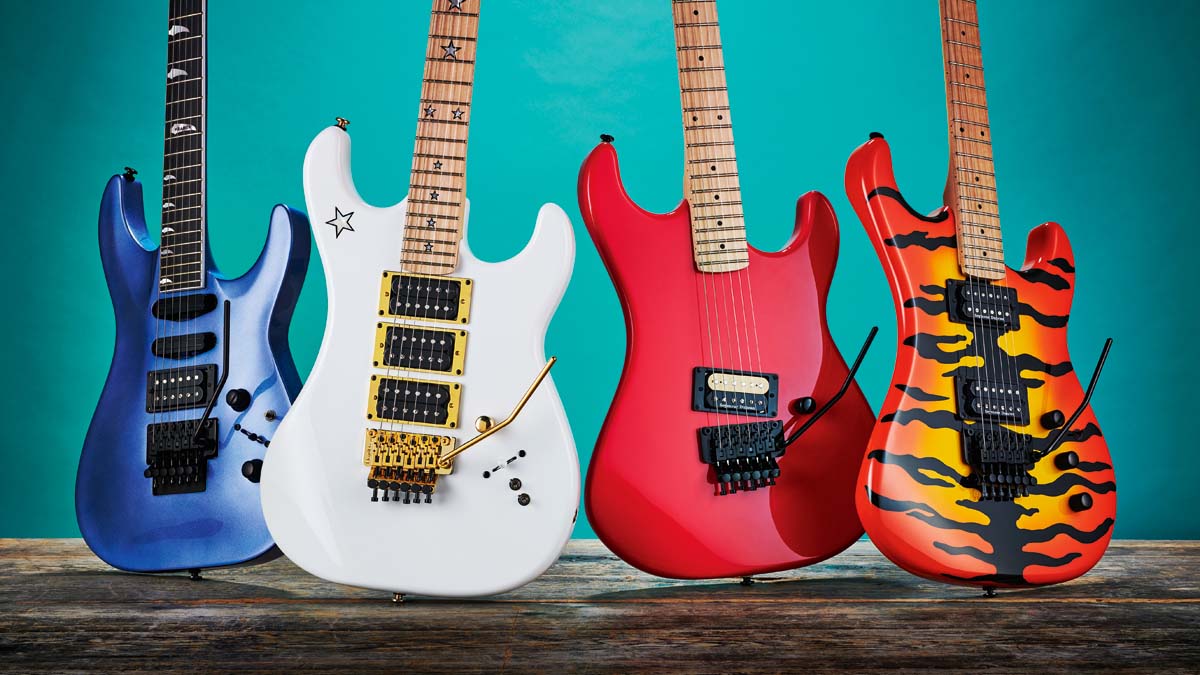
Though the company dates back to the mid-70s when it was mainly specialising in aluminium neck bass guitars, it was a chance encounter between co-founder Dennis Berardi and Eddie Van Halen’s management on a flight in 1981 that led to the virtuoso teaming up with Kramer.
It is rumoured that the guitarist promised to make them the biggest name in the trade – if he didn’t succeed, he certainly came close. The following decade led to some fruitful partnerships and a host of high-quality instruments renowned for uncompromising playability.
By signing up the guitar players in bands like Bon Jovi, Mötley Crüe and Whitesnake, in addition to Eddie’s endorsement for his first mass-produced signature, Kramer became the go-to brand for loud guitars with equally loud looks.
The Originals are a bold resurrection of the 80s Superstrats that typified an era of thrilling guitar acrobatics
It all came to an end in 1991 – flannel was in, spandex was out. By the turn of the millennium, the brand had been sold out of bankruptcy to Gibson, who have now once again revamped the range to ensure their ‘Made To Rock Hard’ legacy remains intact at a more affordable, Indonesian-produced price point.
While the Modern collection explores Kramer-style interpretations of traditional Gibson body shapes, such as the Les Paul and Flying V, the Originals are a bold resurrection of the 80s Superstrats that typified an era of thrilling guitar acrobatics. Read on as we pit Kramer vs. Kramer...
Kramer Original Collection Pacer Vintage
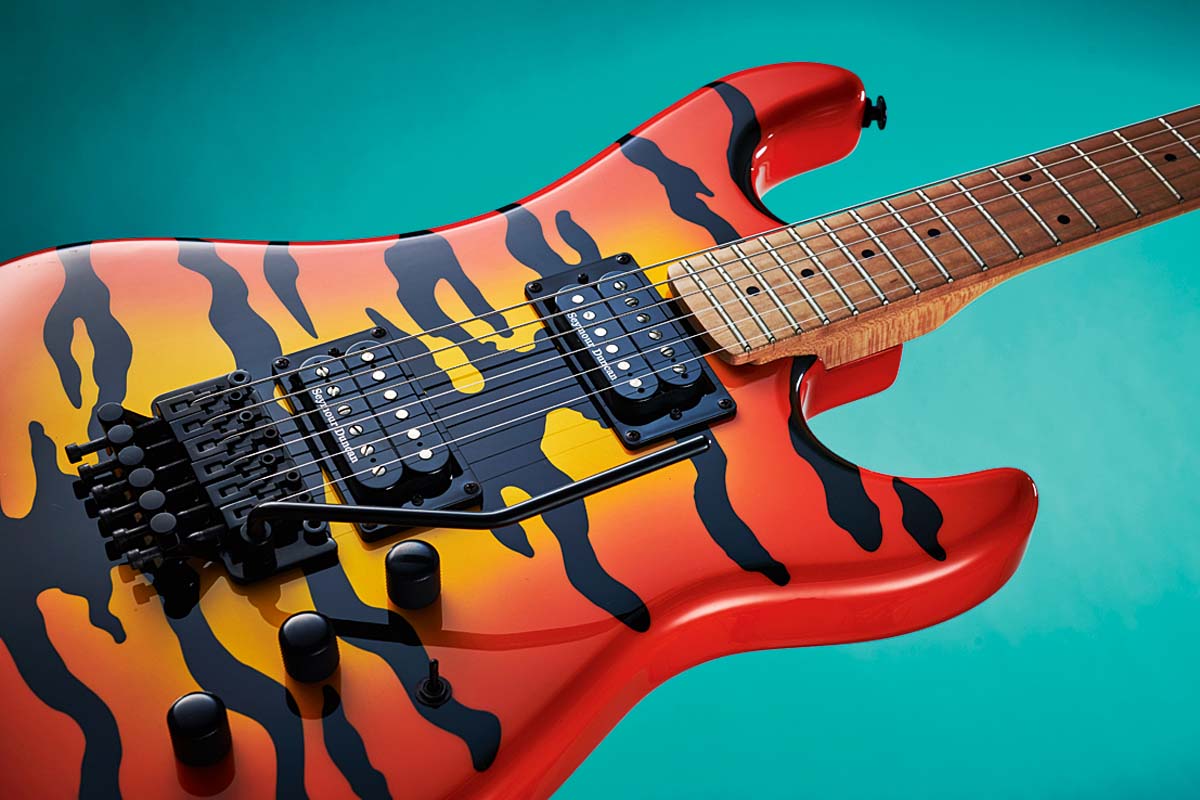
That’s quite a finish…
You certainly won’t go unnoticed with this hanging around your neck, decorated with the same kind of stripes seen on George Lynch’s 1986 signature. There is also a Pure White version for those wanting something less outrageous.
Get The Pick Newsletter
All the latest guitar news, interviews, lessons, reviews, deals and more, direct to your inbox!
Is that the classic Seymour Duncan JB/JN set?
Why, yes it is – and they’re still hard to beat for rock tones. Better still, each volume control doubles up as series/parallel switch for its pickup, and there’s a 002mf capacitor bleed circuit to retain treble frequencies when volumes are down. So, a lot of tonal ground covered.
Where’s the pickup selector?
It’s a three-way mini-toggle found beneath the bridge volume knob. For most, this will function well enough and makes for a tidy front, but if you’re the kind of guitarist who constantly switches back and forth, this particular design makes the control slightly less accessible. Then again, it’s worth remembering this is an instrument aimed at rock players who mainly live on the bridge, except for clean sections and solos high up the neck.

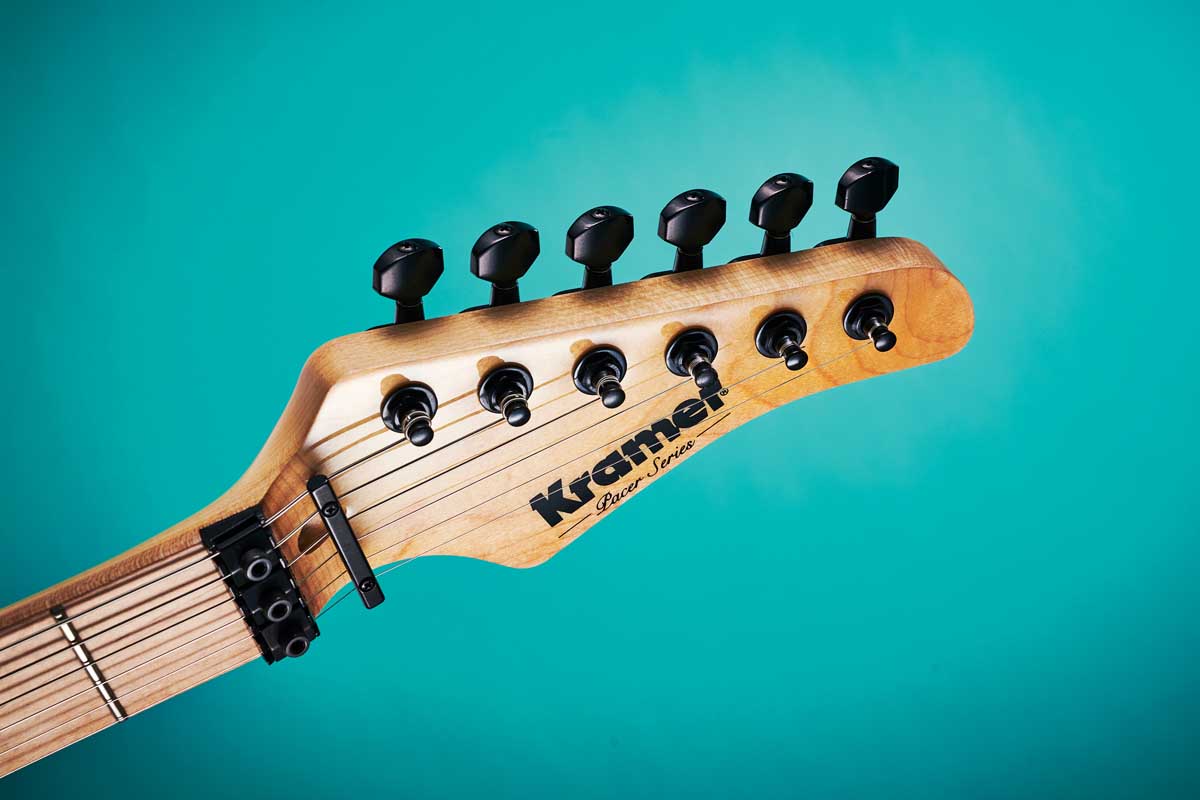
Specs
- PRICE: $759 / £699
- BODY: Maple
- NECK: Maple
- SCALE: 25.5”
- FINGERBOARD: Maple
- FRETS: 22
- PICKUPS: Seymour Duncan JN (neck), Seymour Duncan JB (bridge) with series/parallel tap
- HARDWARE: Floyd Rose 1000 Series Tremolo, Kramer 14:1 machine heads
- FINISH: Pure White, Orange Burst with Tiger Graphic
Kramer Original Collection Jersey Star
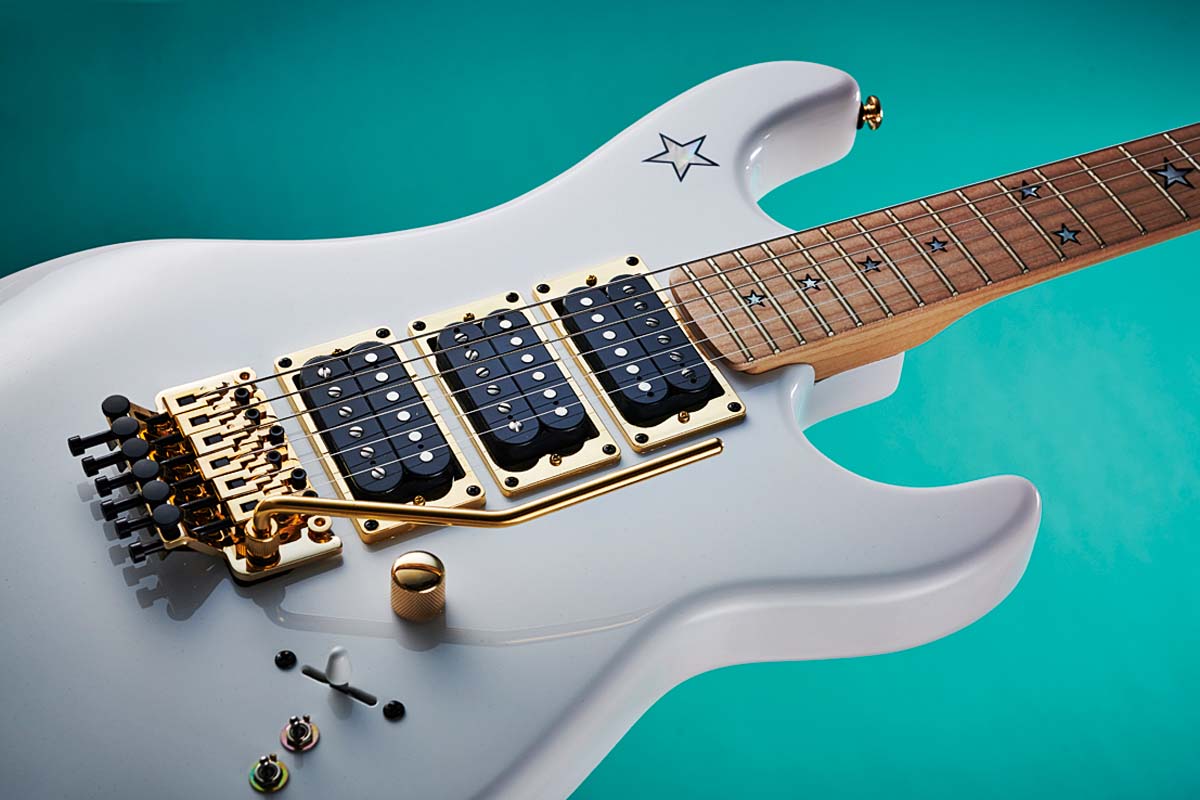
Isn’t that Richie Sambora’s old signature?
Pretty much – and it continues to be one of the best-selling Kramers out there. It’s easy to see why, this is a Superstrat that feels more like an actual Strat – the elliptical C-profile neck feels meatier, there’s a five-way selector and the body is made out of alder, which is more rounded than the maple-bodied Pacers. The option to split two of the humbuckers allows for true single-coil sizzle, whereas options to tap into parallel usually result in a sound somewhere in between.
What else is different about this guitar?
While the other instruments in this round-up have a flat 14” fingerboard radius, this particular model is even flatter still at 16” – which makes it incredibly playable. The addition of gold hardware also works especially well against this Alpine White finish.
Doesn’t that middle humbucker get in the way?
To be fair, three humbuckers can often feel a bit excessive – both visually and tonally – but here, it’s a most welcome addition. Dialling in more cleans and crunches than other 80s rock guitarists, clearly Sambora needed something that could handle it all...
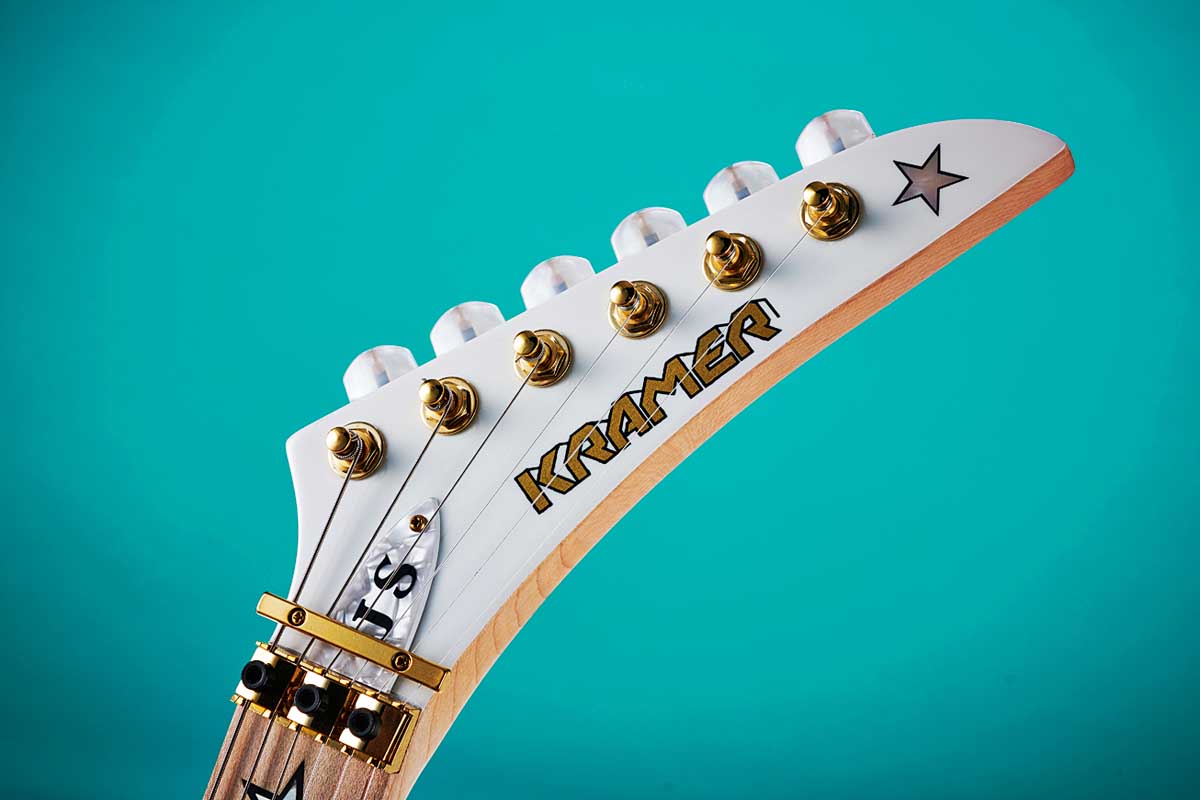
Specs
- PRICE: $1,149 / £1,049
- BODY: Alder
- NECK: 3-piece Maple
- SCALE: 25.5”
- FINGERBOARD: Maple
- FRETS: 22
- PICKUPS: Seymour Duncan JN (neck), Seymour Duncan JB (middle), Seymour Duncan JB (bridge) with coil-split switch
- HARDWARE: Floyd Rose 1000 Series Tremolo, Die cast machine heads
- FINISH: Alpine White, Candy Apple Red
Kramer Original Collection SM-1
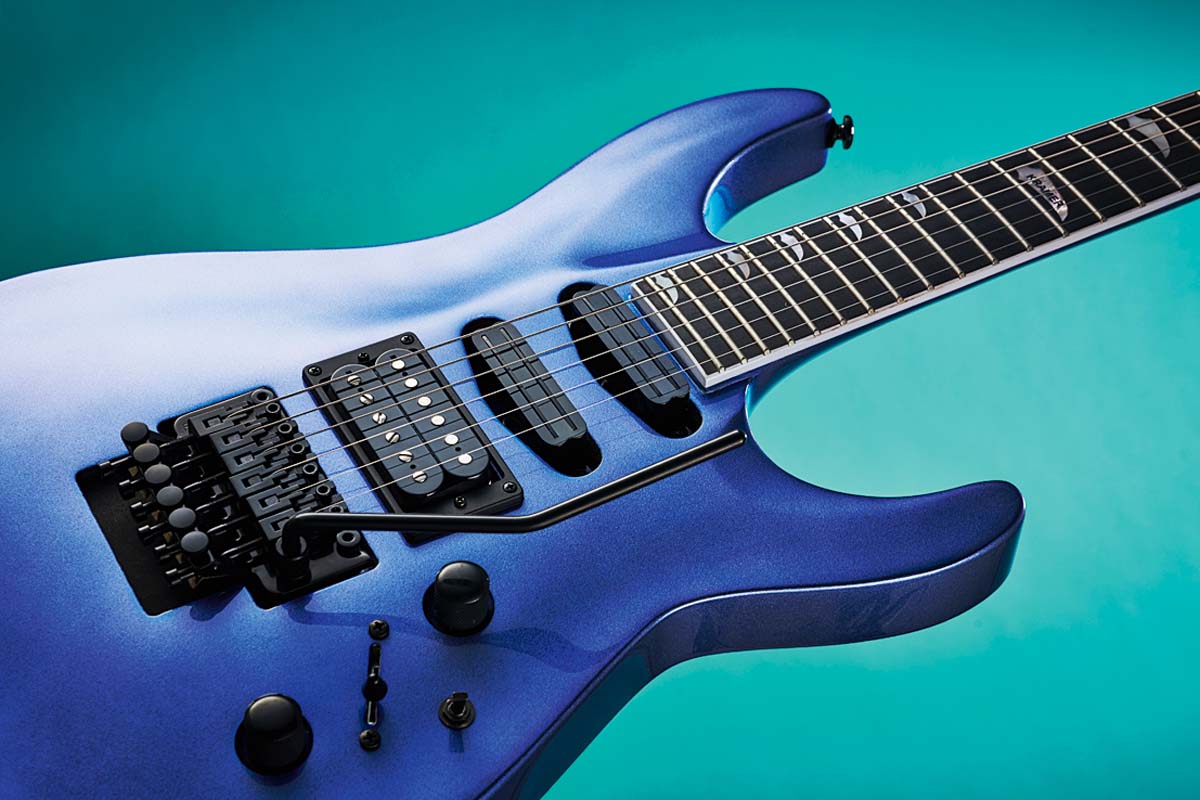
The most metal axe in the Original Collection?
It certainly is – and even comes in a finish called Maximum Steel. The tremolo is recessed which means you can pull more in pitch – you can get close by tilting the bridge on a non-recessed guitar, but having less physical space to play with will always result in less range. And while we’re on the subject of range, you might have noticed 24 frets instead of 22.
That headstock looks pretty nifty…
Introduced in 1986 when Kramer were upping production, the pointy headstock is among their most classic – also appearing in the form of pearloid inlays. The 14-degree angle is said to provide more pressure at the nut for sustain, which – when you factor in the all-mahogany neck-through body – makes this the thickest-sounding guitar of the collection.
What about the pickups?
While it’s a JB once again in the bridge, the two Cool Rails bring a lot of power in the middle and neck positions – arguably some of the most deceptive humbuckers ever made thanks to their single-coil size. It also features a coil-split switch and a five-way selector.
Specs
- PRICE: £949 / $1,049
- BODY: Mahogany
- NECK: Mahogany
- SCALE: 25.5”
- FINGERBOARD: Ebony
- FRETS: 24
- PICKUPS: Seymour Duncan Cool Rails (neck and middle), Seymour Duncan JB (bridge) with push-pull coil-split
- HARDWARE: Floyd Rose 1000 Series Tremolo, Die cast machine heads
- FINISH: Candy Blue, Orange Crush, Maximum Steel
Kramer Original Series Baretta Vintage
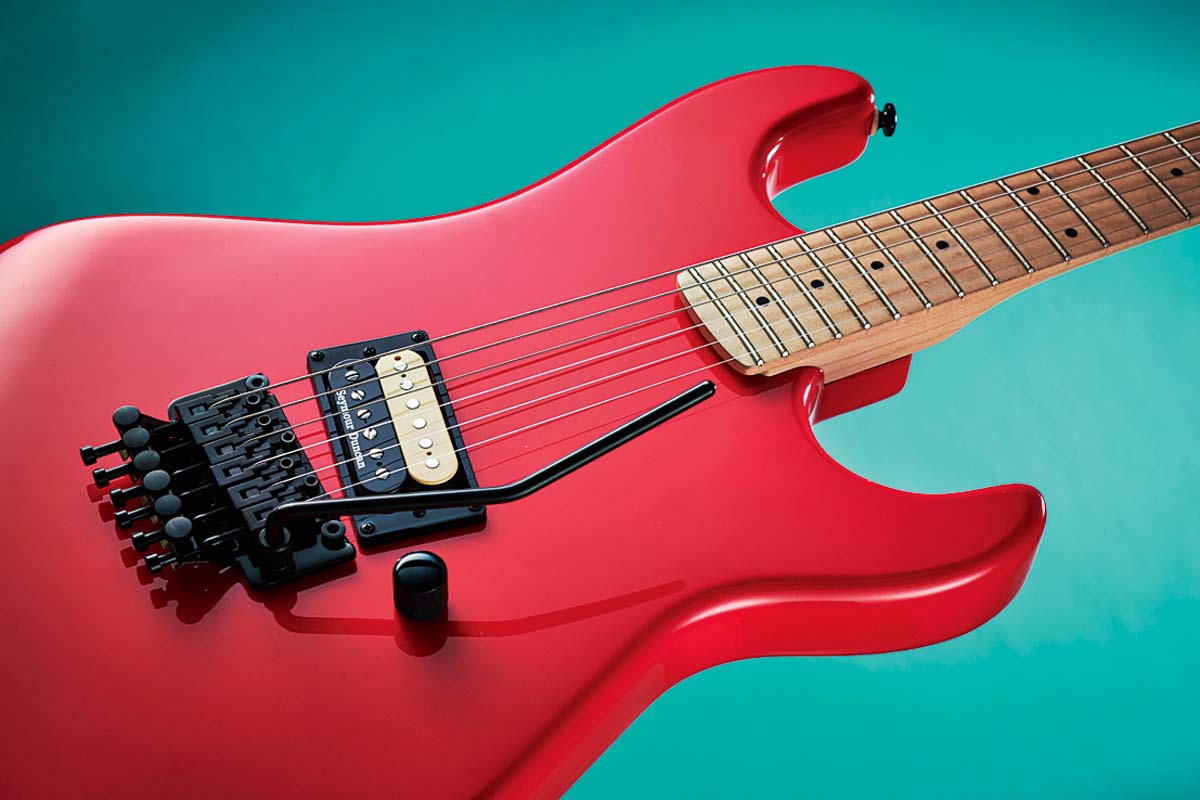
That’s another striking headstock…
Indeed it is – very similar to the pointy headstock on the SM-1 but rounded at the end, originally introduced in 1984 and commonly known as the banana or hockey stick headstock. Hey, if it was good enough for Eddie...
The one angled humbucker is also quite the statement…
You may have already guessed what it is. As with the Pacer Vintage, pulling out the volume control offers a coil tap on the JB, so there is some tonal variety. Again, the Van Halen connection is strong here – much like the single-pickup 5150 guitar he himself assembled at the Kramer factory and his original homemade Frankenstrat with the angled Gibson PAF – it’s a thunderously uncomplicated workhorse.
What are the advantages of a slanted bridge pickup, then?
In most cases, clearer highs and more power from the thinner strings while retaining the right kind of warmth for the higher gauges – effectively giving you more note articulation across the board. Typical for Strats and Teles though less common for humbuckers, the idea goes all the way back to Leo Fender himself.
Specs
- PRICE: $699 / £649
- BODY: Maple
- NECK: Maple
- SCALE: 25.5”
- FINGERBOARD: Maple
- FRETS: 22
- PICKUPS: Seymour Duncan JB zebra-coil humbucker with coil-split switch
- HARDWARE: Floyd Rose 1000 Series Tremolo, Die cast machine heads with pearloid buttons
- FINISH: Alpine White, Candy Apple Red
- CONTACT: Kramer Guitars
Kramer vs. Kramer – Head to head comparison
A question of preference rather than value
As far as build quality goes, there is very little in difference between these models. They all feel rugged and reliable, with the same dependable double-locking Floyd Rose system to ensure tuning is held no matter how much use or abuse it receives.
All of these guitars are fitted with an allen key holder on the back of the headstock and come with Seymour Duncans – so really it just boils down to which best suits your needs.
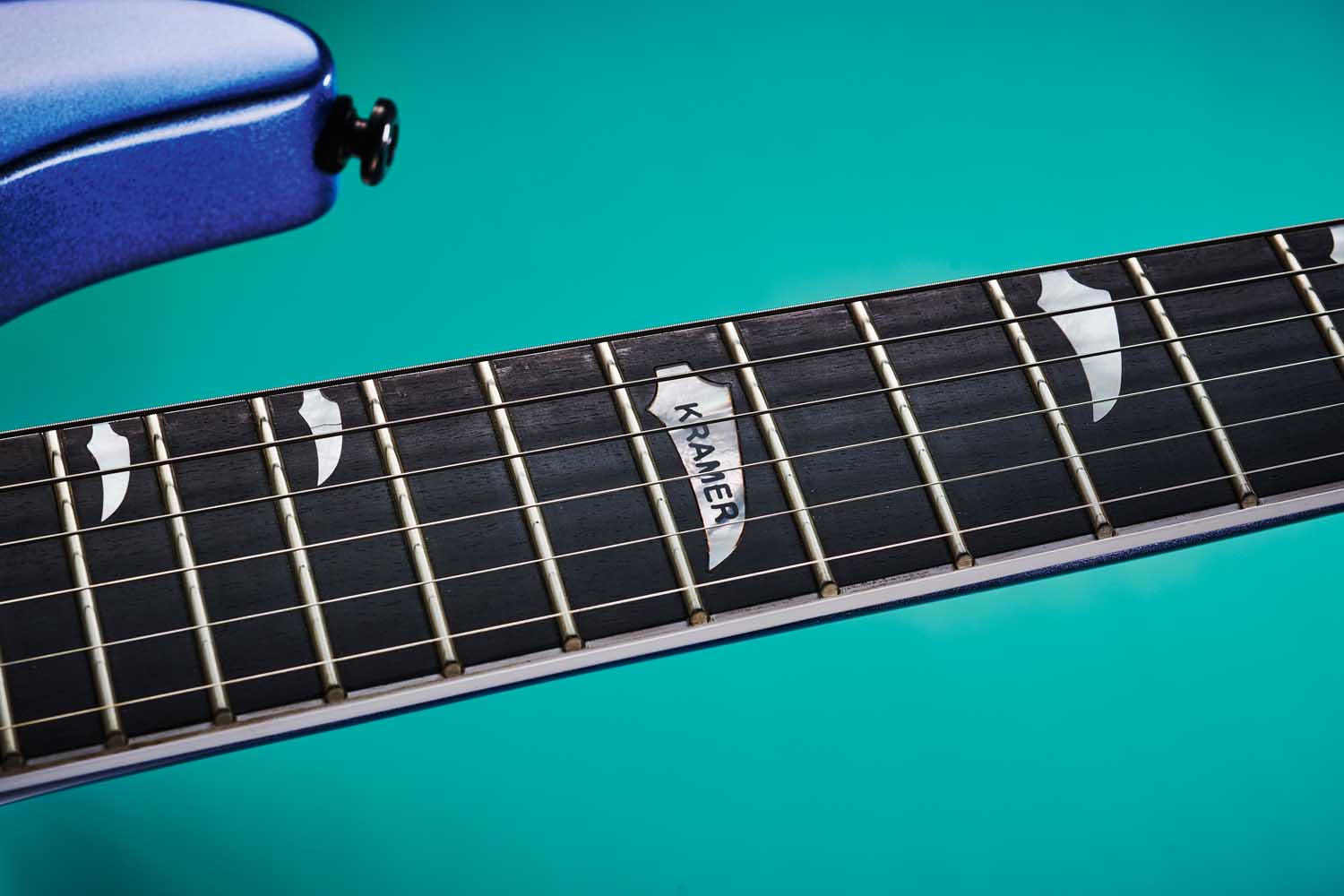
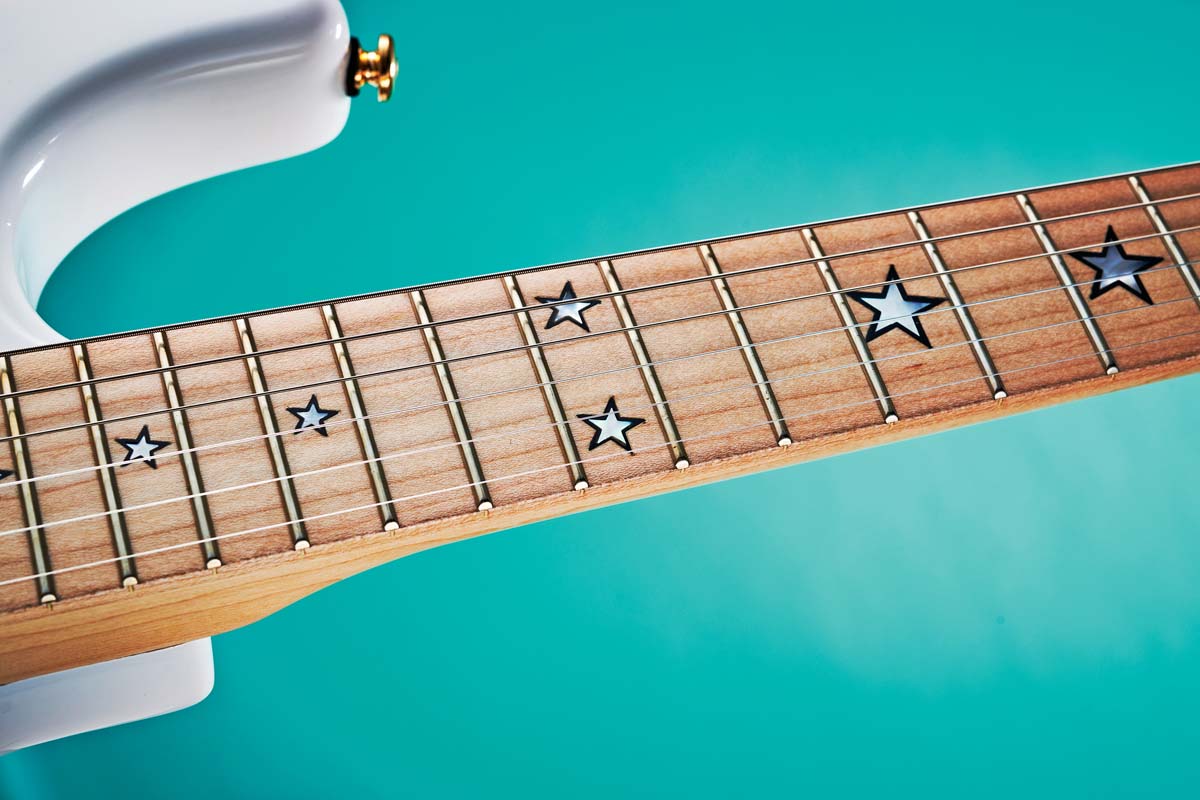
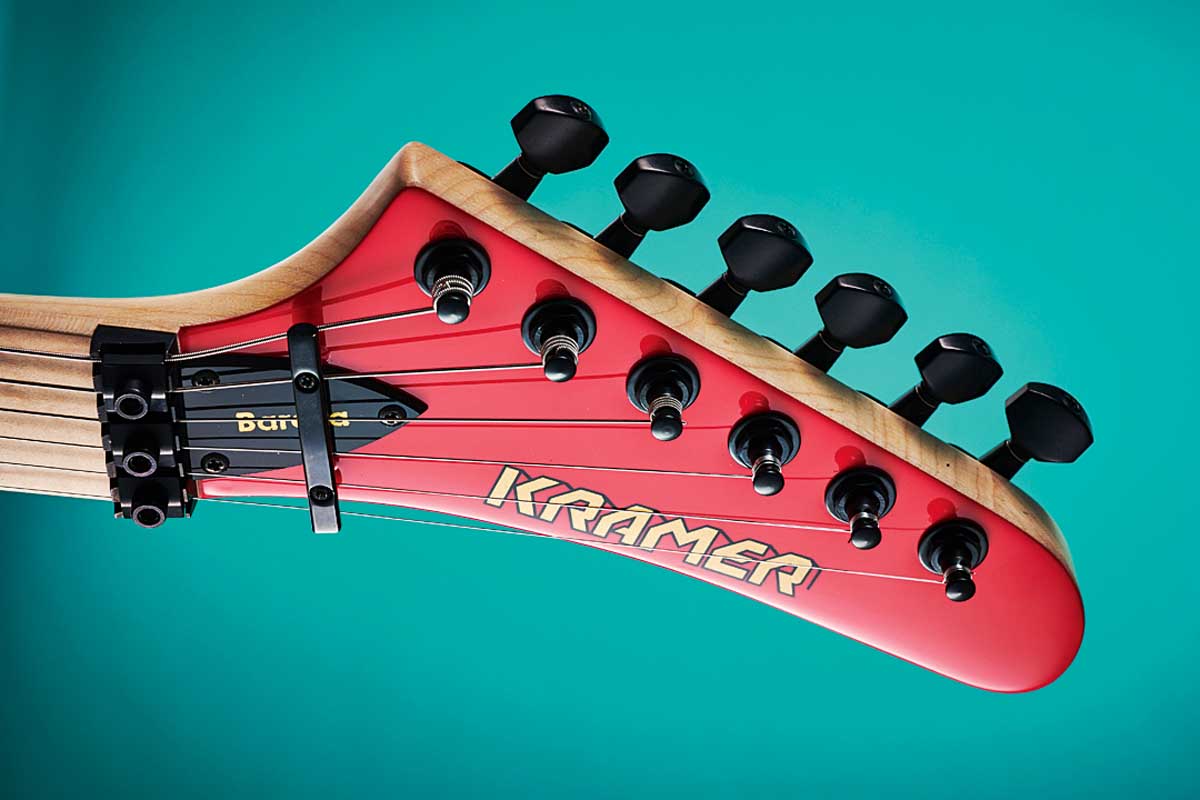
Anyone needing a neck pickup will naturally rule out the Baretta Vintage, but there are plenty of rock players out there that will appreciate the simplicity of one angled humbucker in the bridge. It’s also worth noting that for only £50 more, the Pacer Vintage benefits from two humbuckers fitted with the treble-bleed mod.
Interestingly, both of these models are made entirely out of maple – which, in conjunction with Seymours, makes for bright tones with no shortage of attack to cut through. The mahogany body and neck through of the SM-1, however, is aimed at a more of a darker-sounding metallic shredder – with higher output in the neck and a trem cavity.
The Jersey Star is the most expensive offering in this line-up. Is it worth the extra money? In this case, very much so.
As we expected, it is also considerably lighter – maple is a much denser and harder tonewood by comparison. Its deep warmth is offset by the snappiness of the ebony fingerboard.
The Jersey Star is the most expensive offering in this line-up and with any group test we have to ask ourselves, is it worth the extra money? In this case, very much so. The alder body is noticeably louder unplugged and sounds fuller plugged in, with no shortage of tonal options thanks to two independent coil split switches for the neck and bridge pickups.
This model also features no less than 13 stars and – thanks to the JS truss rod cover – will leave your friends mistakenly wondering how you got your hands on an incredibly rare Joe Satriani prototype!
Final verdict

It’s interesting how Kramer – a company that took a sizeable chunk out of Les Paul sales over the 80s – now find themselves being brought back to life by Gibson.
This latest collection is certainly worthy of the brand’s heritage, with wild finishes and no options for fixed bridges. It is, after all, what Kramer were famous for – and they still are, looking how much the American-made originals go for secondhand.
Perhaps it’s the sheer affordability of the Pacer Vintage that makes it such an enticing instrument. You’d be hard-pressed to find a better Floyd-equipped Superstrat under £700, especially considering the custom aesthetics of the tiger striped Orange Burst and the inclusion of real Seymours instead of anything outsourced or ‘Duncan Designed’.
The Baretta Vintage would be a great choice for rhythm players, particularly those who deal in rock, punk and thrash
But the old Sambora signature really does trump this round-up on sheer class alone, boasting versatility and effortless playability. The Baretta Vintage would be a great choice for rhythm players, particularly those who deal in rock, punk and thrash.
There’s an elegance to its simplicity and aesthetic – the Ruby Red finish is very easy on the eye. The SM-1 is, in many ways, the opposite – less attention-seeking and more suited to soloists and instrumental ultra-shredders, with tones galore thanks to the unbranded Cool Rails and JB. All in all, this relaunch of the Kramer brand is a great move from Gibson.
Best value: Pacer Vintage
4 out of 5
Best all-rounder: Jersey Star
5 out of 5
Best for metal: SM-1
4 out of 5
Best for riffing: Baretta Vinttage
4 out of 5
Amit has been writing for titles like Total Guitar, MusicRadar and Guitar World for over a decade and counts Richie Kotzen, Guthrie Govan and Jeff Beck among his primary influences as a guitar player. He's worked for magazines like Kerrang!, Metal Hammer, Classic Rock, Prog, Record Collector, Planet Rock, Rhythm and Bass Player, as well as newspapers like Metro and The Independent, interviewing everyone from Ozzy Osbourne and Lemmy to Slash and Jimmy Page, and once even traded solos with a member of Slayer on a track released internationally. As a session guitarist, he's played alongside members of Judas Priest and Uriah Heep in London ensemble Metalworks, as well as handled lead guitars for legends like Glen Matlock (Sex Pistols, The Faces) and Stu Hamm (Steve Vai, Joe Satriani, G3).
“It holds its own purely as a playable guitar. It’s really cool for the traveling musician – you can bring it on a flight and it fits beneath the seat”: Why Steve Stevens put his name to a foldable guitar
“Finely tuned instruments with effortless playability and one of the best vibratos there is”: PRS Standard 24 Satin and S2 Standard 24 Satin review


![A black-and-white action shot of Sergeant Thunderhoof perform live: [from left] Mark Sayer, Dan Flitcroft, Jim Camp and Josh Gallop](https://cdn.mos.cms.futurecdn.net/am3UhJbsxAE239XRRZ8zC8.jpg)







